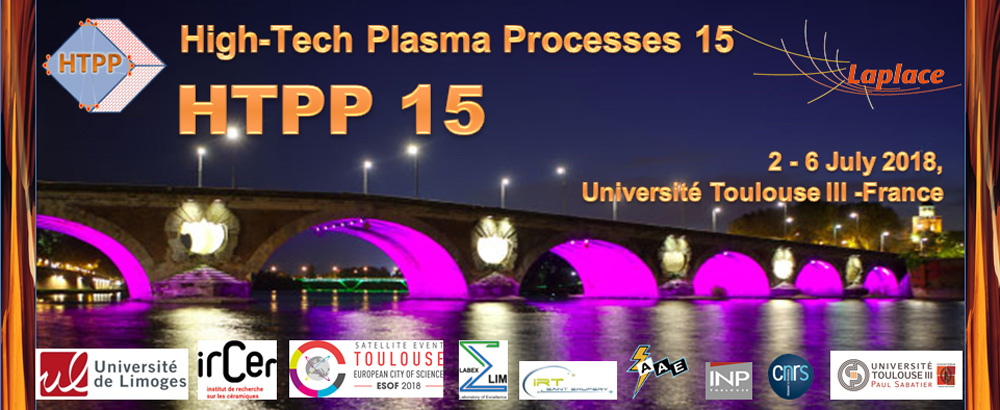Inductively coupled thermal plasma (ICTP) is characterized by high gas temperature, high enthalpy, and no contamination. From these characteristics, the ICTP has widely been adopted for various materials processing such as nanoparticle synthesis, thin solid film deposition. etc. However, the conventional cylindrical ICTP is hardly suitable to large-area materials processing because a large volume of ICTP is required for large-area processing; The large volume of ICTP needs a high input power to be sustained and it is shrunk by Lorentz force. For the purpose of large-area surface modification using ICTP, we have developed a unique ICTP, i.e. a loop type of ICTP (loop-ICTP) [1]. The loop-ICTP is formed in a loop quartz tube connected with a rectangular quartz vessel. On the other hand, a substrate is placed on the substrate holder in the quartz vessel. Then, a part of loop-ICTP is formed directly lying on the substrate with a linear shape. To this linear shaped ICTP on the substrate, scanning the substrate perpendicularly provides 2D exposure on the whole surface of the substrate. In this report, experimental results are shown on two-dimensional rapid surface oxidation of a 2-inch Si or SiC substrates using the Ar-O2 loop-ICTP. In addition, a numerical model of two-dimensional surface oxidation by thermal plasma was developed based on Deal-Grove model [2] to discuss 2D thermal plasma oxidation process of the substrate surface.
The experimental system in this report is the same configured to those in our literature [3]. Argon gas was used as a main plasma gas, which was supplied from the top of the loop torch with a flow rate of 0.5 slpm. On the other hand, Ar/O2 gas mixture of 0.5/0.2 slpm was fed from the top of the rectangular quartz vessel under the loop tube. These gas mixture was supplied through a porous ceramic almost uniformly onto the substrate. In the quartz vessel, a scanning substrate holder made of Si3N4 was located. This holder can be moved perpendicular to the loop plane. On this holder, a 2-inch Si or SiC substrate was placed. Under the above condition, the Ar ICTP was established in the loop tube, while also Ar/O2 ICTP was formed linearly on the substrate. Scanning the substrate offers a 2D oxidation processing of the substrate. Oxide layer thickness was measured with an interferometer. Finally, more than 100 nm oxide layer was created for the Si substrates, while 40 nm thickness of SiO2 was obtained on the SiC surface with one scan with 0.25 mm/s.
A numerical model was also made to discuss two-dimensional rapid surface oxidation for a Si substrate by scanning loop-type of Ar-O2 thermal plasma. The model uses the 3D energy conservation equation to determine the substrate temperature, and the Deal-Grove model to obtain temporal variation in the thickness of oxide layer. As a result, the developed model shows that almost uniform oxide layer can be obtained only by one scan of the 2-inch Si substrate for one minute with oxidation rate of 100 nm/min.
[1] Y.Maruyama et al., IEEE Trans. Plasma Sci., 44(12), 3164-3171,2016.12
[2] B. E. Deal and A. S. Grove, J. Appl. Phys., 36, 3770-3778, 1965
[3] T.Tsuchiya, Plasma Chem. Plasma Process. 2018.3, https:doi.org/10.1007/s11090-018-9881-7

 PDF version
PDF version
